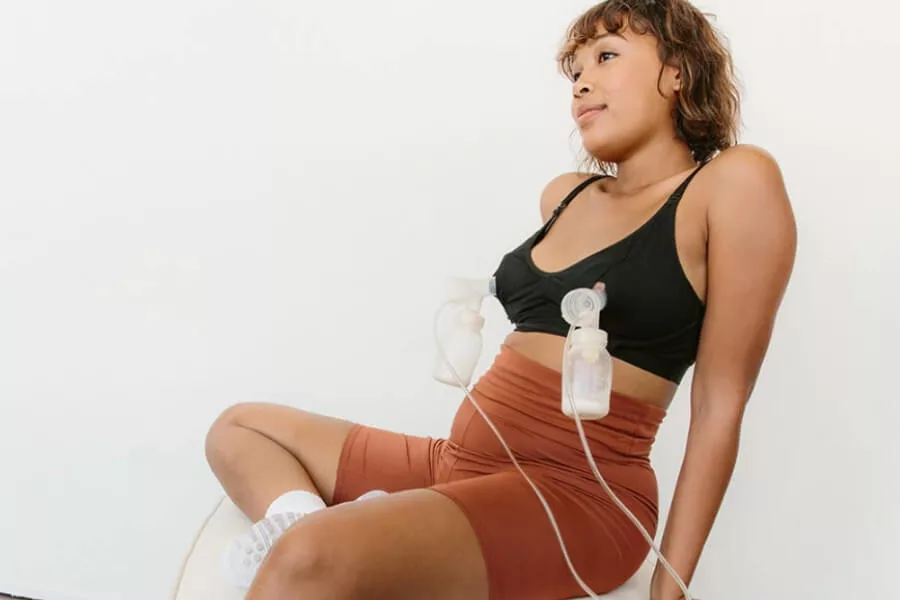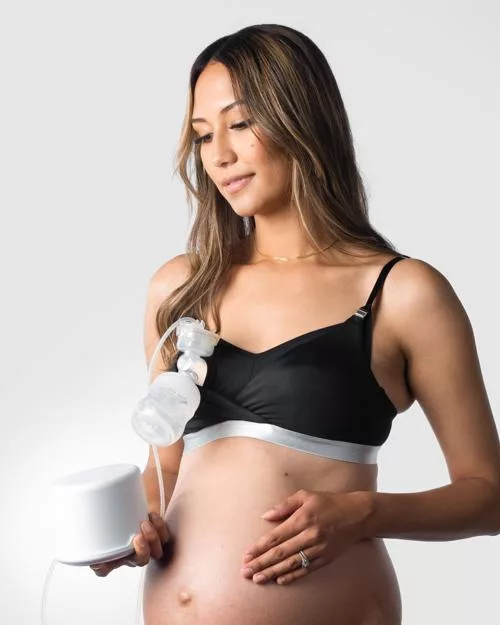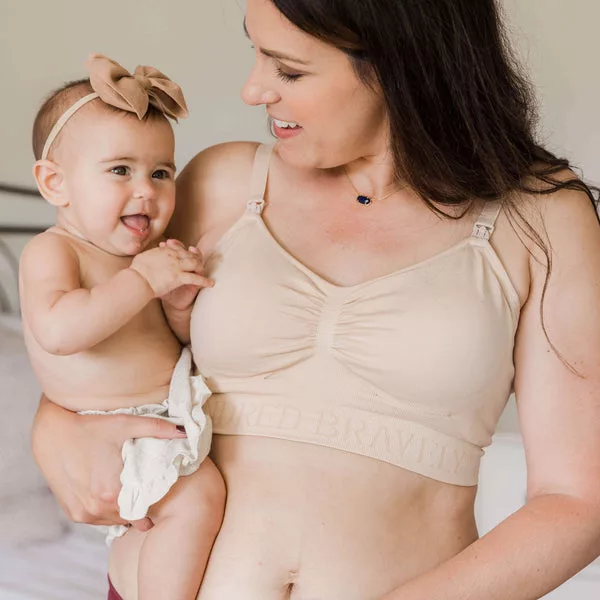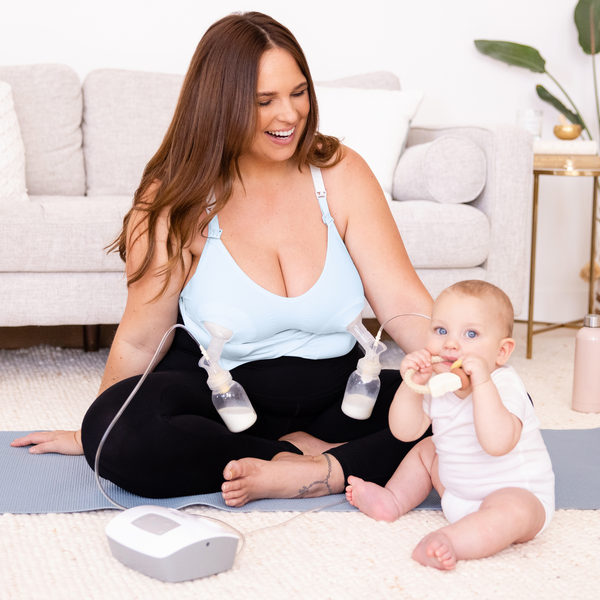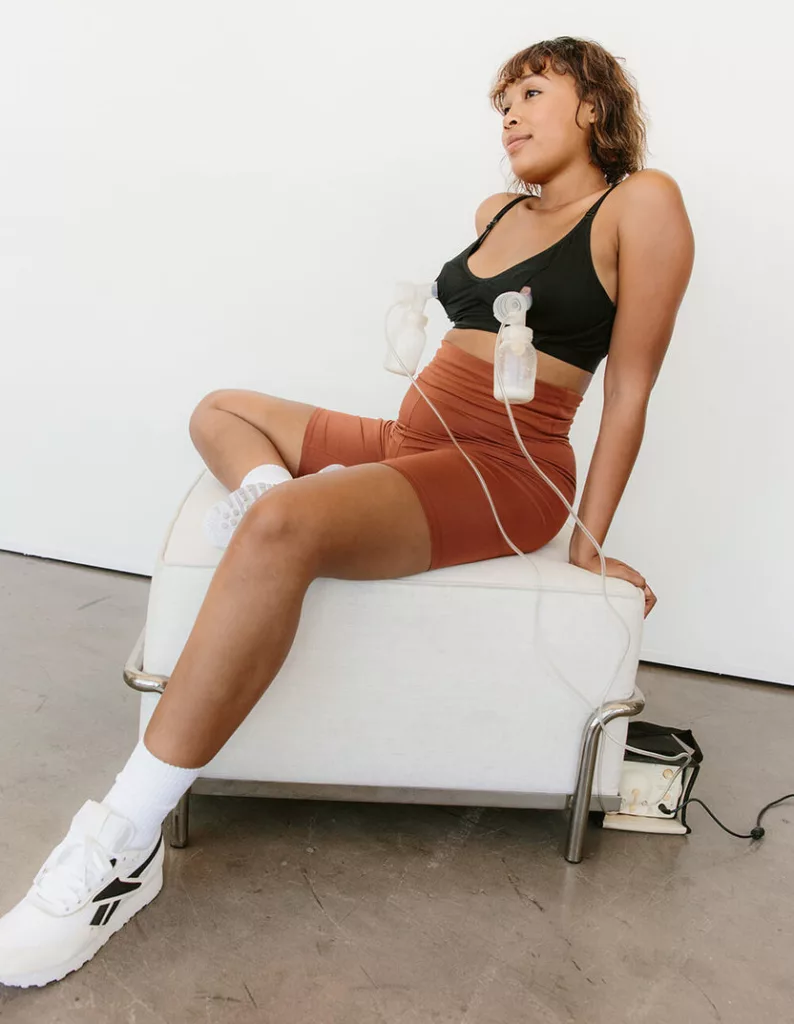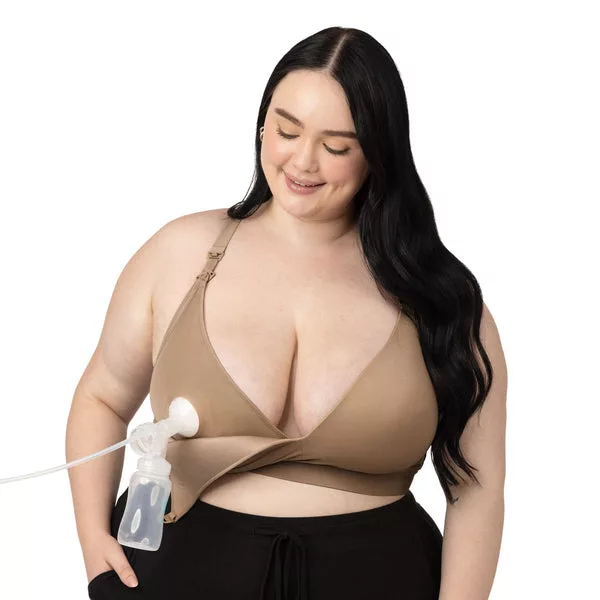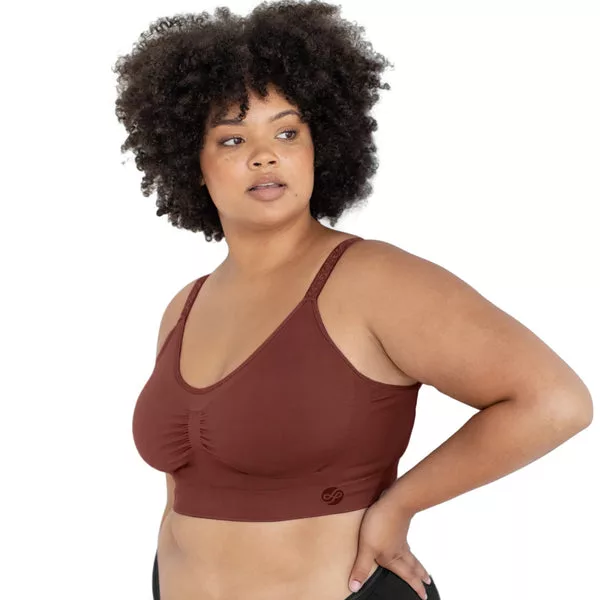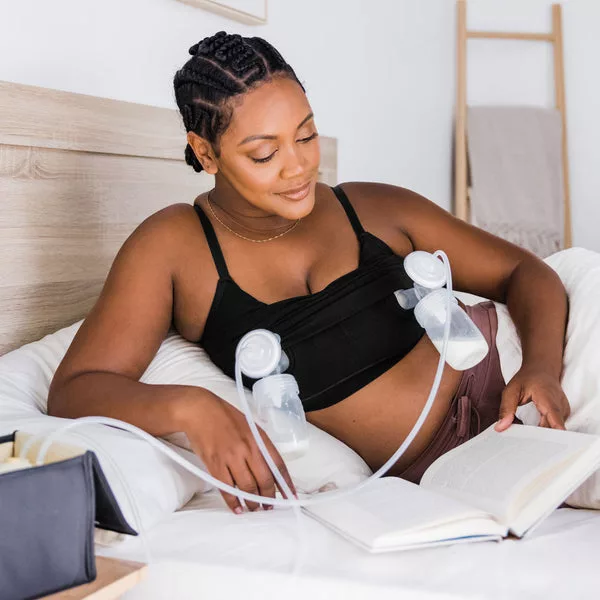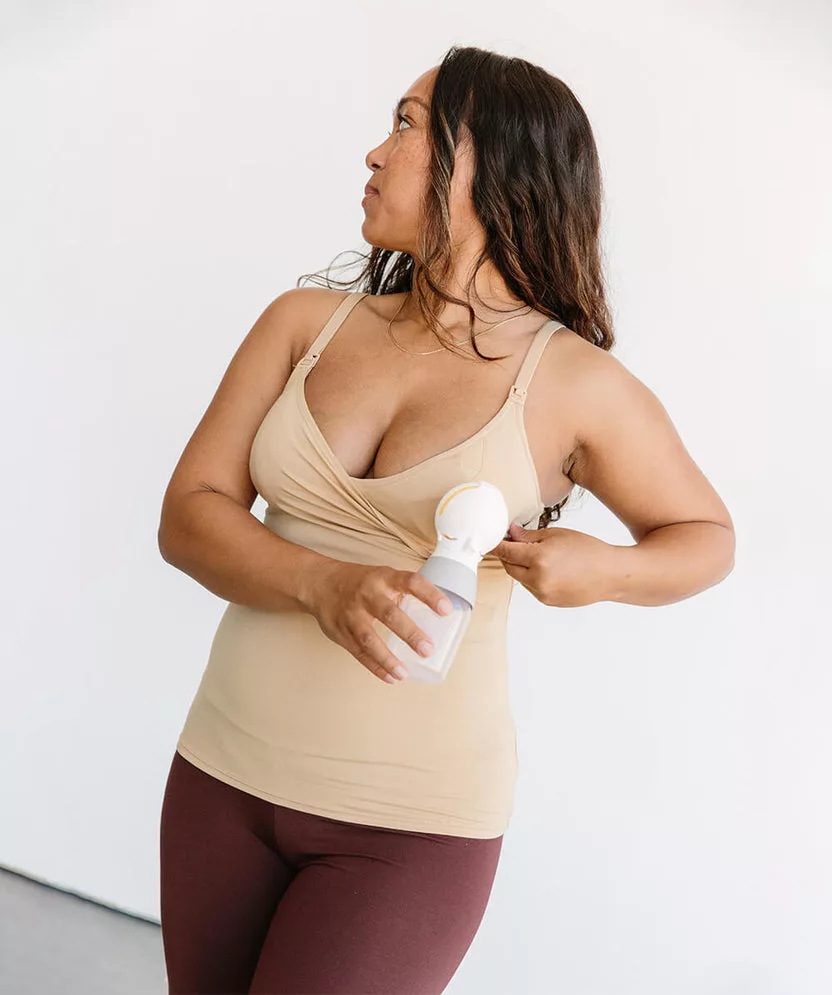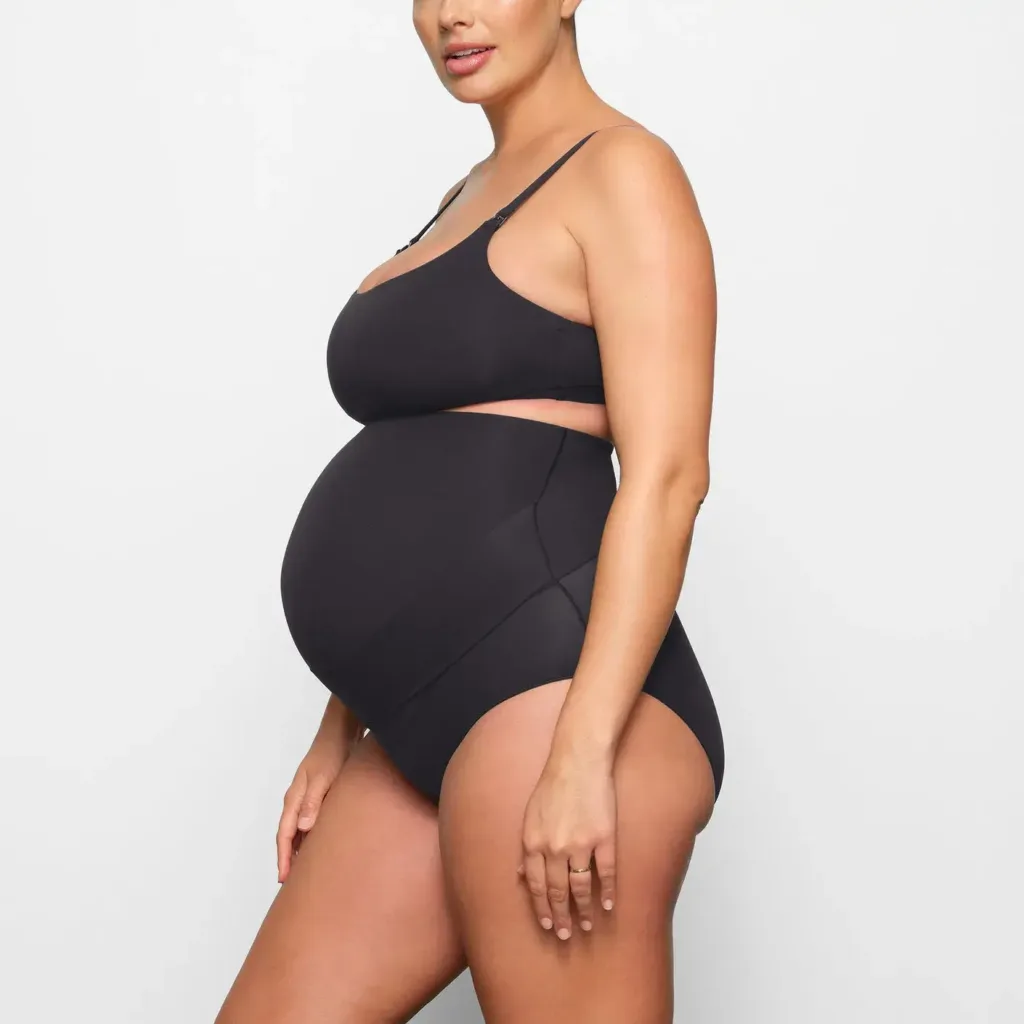Whether you’re currently pregnant and just getting into the swings of things, or are already in the postpartum phase, maternity pumping bras are a wardrobe staple for every nursing mom. Understanding how to choose the right one can make your breastfeeding and pumping journey a breeze. This comprehensive guide aims to answer all the questions you might have about maternity pumping bras. From the benefits of owning one to how they differ from regular nursing bras, we’ve got you covered.
In this guide, we dive deep into the various types of maternity pumping bras available, ensuring that you can find the ideal one that fits both your lifestyle and personal style. Whether you’re planning to pump occasionally or are gearing up for exclusive pumping, we’re here to help you make the most informed decision.
Topics
What makes a maternity pumping bra essential?
The first thing you’ll probably ask is why you even need a maternity pumping bra. Surely a regular maternity bra will suffice? Well, not really. A maternity pumping bra is not just another bra; it’s an essential tool that can greatly ease your pumping experience. These bras are designed with special features like removable panels and secure flaps to accommodate breast pump shields. This means you can pump hands-free, giving you the freedom to multitask or simply relax while pumping.
Additionally, a good pumping bra can offer optimal support to your changing breasts, thereby reducing the risk of issues like engorgement or clogged ducts. It ensures that the breast pump is correctly positioned, which is crucial for efficient milk expression. If you ever wondered whether you should wear a bra while pumping or if a nursing bra could serve the purpose, the answer lies in the specialized features of a maternity pumping bra.
Our Most Elegant Picks for Every Pumping Mom
Top hands-free pumping bras
If convenience is your top priority, hands-free pumping bras are the way to go. Designed with sturdy straps and secure flaps, these bras allow you to multitask effortlessly. They often come in stretchable fabrics that adapt to your changing breast size, providing both comfort and function.
Best pumping and nursing combo bras
For those who prefer a one-size-fits-all solution, a pumping and nursing combo bra is perfect. It serves the dual purpose of allowing you to pump and breastfeed without having to change bras. These bras typically come with easy-to-use clips or flaps that can be opened for breastfeeding and securely fastened for pumping.
Most comfortable wireless pumping bras
Wireless pumping bras offer maximum comfort without compromising on support. They are especially recommended for moms experiencing sensitivity or those who are prone to clogged ducts. The soft fabric and absence of underwire make these bras a dream to wear all day.
Best sports pumping bras
For the active mom, sports pumping bras are an excellent choice. These bras offer great support and are made from moisture-wicking materials to keep you dry during workouts. They come with compartments to securely hold pump flanges, making it easier for you to keep up with your fitness routine while attending to your pumping needs.
Most versatile all-in-one pumping bras
All-in-one pumping bras are the Swiss Army knives of maternity bras. They offer various functionalities, including nursing, pumping, and even as a regular bra. These bras are perfect for moms who prefer a one-size-fits-all solution and are ideal for those unpredictable days when you need to be prepared for anything.
Best pumping bra for work
It’s also one of the best pumping bras for work. For the professional mom who is balancing work life and motherhood, a discreet yet functional pumping bra is a must. These bras are designed to be unobtrusive under work attire but still offer easy access for pumping. They provide the convenience needed to maintain a pumping schedule without skipping a beat during the workday.
Top plus-size pumping bras
Plus-size pumping bras are designed to offer extra support and comfort for curvier moms. These bras often feature wider straps, additional hook-and-eye closures, and reinforced cups. They are perfect for those who are looking for a combination of functionality and comfort tailored to their body size.
Best sleep pumping bras
Many moms find the need to pump even during nighttime. Sleep pumping bras are made of softer, more breathable fabric that is comfortable enough to sleep in, yet sturdy enough to hold the pump flanges securely. They’re ideal for moms who are looking to keep their milk supply steady around the clock.
Most affordable pumping bras
Becoming a new mom can be expensive, but that doesn’t mean you have to compromise on quality. Affordable pumping bras offer essential features like hands-free convenience and easy flange insertion without breaking the bank. They’re perfect for moms on a budget who still want reliability and comfort.
Best pumping bra tanks
When convenience is a priority, pumping bra tanks come to the rescue. These two-in-one solutions feature built-in bras within comfy tank tops. They are perfect for moms who want to minimize the layers they wear and streamline the pumping process, making them great for home use or even outdoor activities.
Top wireless pumping bras
Wireless pumping bras are a boon for those who prioritize ultimate comfort. Without an underwire, these bras are easier on the body, reducing the risk of clogged milk ducts or discomfort. They still offer ample support and secure the pump flanges efficiently, ideal for long-term wear and frequent pumping sessions.
Does pumping prevent breast sagging?
One of the common misconceptions is that pumping can prevent breast sagging. The truth is that breast sagging is influenced by a variety of factors such as genetics, age, and overall skin elasticity. While pumping might not directly prevent sagging, wearing a well-fitted, supportive pumping bra can help maintain the breast shape during your breastfeeding journey.
Wearing the right type of bra, whether you’re pumping or breastfeeding, can offer the necessary support to your breasts. This is particularly important as your breasts are likely to change size and fullness multiple times a day, depending on your milk supply. Having adequate support can alleviate some of the physical discomforts you may face.
How many pumping and nursing bras do I need?
The number of pumping and nursing bras you need can vary based on your lifestyle and how often you intend to do laundry. Generally, it’s a good idea to have at least three to four bras: one to wear, one in the laundry, and one or two for backup. If you’re exclusively pumping or alternating between breastfeeding and pumping, you might find it convenient to have additional bras.
Having multiple bras can also allow you to switch them out as needed, which is particularly helpful if you experience issues like engorgement or milk leakage. Remember, the key is to find bras that are not just functional but also comfortable for long-term wear. After all, you’ll be spending a lot of time in them!
Is it better to pump or breastfeed to increase milk supply?
Increasing milk supply is a common concern for many new mothers. While breastfeeding directly can stimulate milk production due to the skin-to-skin contact and natural latch of the baby, pumping can also be effective, especially if you follow a consistent schedule. Both have their pros and cons, but the most crucial factor is regular and effective milk removal from the breasts.
If you’re struggling with milk supply, it’s essential to understand that both pumping and breastfeeding can work in tandem to help you. Sometimes, moms may even opt for ‘power pumping,’ a method that mimics a baby’s cluster feeding to stimulate milk production. Regardless of the method you choose, always consult with a healthcare provider for a tailored solution.
Should you sleep with a bra on while breastfeeding?
The choice of wearing a bra while sleeping during your breastfeeding journey is highly individual. Some women find that wearing a soft, comfortable bra can help manage nighttime leaking and keep nursing pads in place. However, a tight-fitting or underwired bra may restrict milk flow and potentially lead to issues like clogged milk ducts.
If you opt to sleep in a bra, make sure it’s specifically designed for nighttime nursing or is a comfortable maternity pumping bra with no underwire. On the flip side, some mothers prefer to go braless to allow the breasts to air out, which can help with nipple sensitivity and prevent infection. Listen to your body and decide what feels best for you.
What are the disadvantages of a breast pump?
While breast pumps offer the convenience of storing milk for later and providing feeding flexibility, they do come with some disadvantages. For instance, pumping can be time-consuming and may require you to carry multiple accessories like bottles, flanges, and a cooler when you’re on the go. Not to mention the need for a quiet and private place to pump if you’re outside your home.
Additionally, some women find that they don’t respond well to a pump, which can affect the amount of milk they can express. Pumps can also be expensive, and not all types may be covered by health insurance. Lastly, poor hygiene practices with pump parts can lead to bacterial growth and infections. Therefore, it’s important to weigh the pros and cons and make an informed choice.
How often should you wash your pumping bra?
The frequency with which you should wash your pumping bra largely depends on your personal preference and daily activities. However, given that these bras come in contact with breast milk, it’s advisable to wash them after every one or two wears, or sooner if they become soiled. Using a gentle, fragrance-free detergent can help maintain the bra’s integrity while also ensuring it’s safe for your baby.
Some mothers opt to have multiple pumping bras on hand to rotate them frequently, thereby reducing the need for daily washing. This practice not only ensures that you always have a clean bra available but also prolongs the lifespan of each bra. Just like any other piece of clothing that comes in direct contact with your skin and bodily fluids, regular washing is essential for hygiene.
Should breastfeeding bras be tight or loose?
Finding the right fit for a breastfeeding or maternity pumping bra can be a delicate balancing act. While you want adequate support, a bra that’s too tight can compress the breast tissue, potentially leading to clogged ducts or issues with milk supply. On the other hand, a bra that’s too loose may not provide the support you need, making daily activities or even breastfeeding itself uncomfortable.
For the best fit, opt for bras that have adjustable straps and multiple hook settings to accommodate changes in breast size during your breastfeeding journey. Many women find that their breast size fluctuates throughout the day as they nurse or pump, so having the ability to easily adjust the fit can be a game-changer. Consult with a lactation specialist or a bra fitting expert to find the perfect size for you.
How do you know if your breast is empty after pumping?
Knowing when your breast is ’empty’ after pumping can be challenging because breasts are constantly producing milk. However, there are signs to look for that indicate effective pumping. The flow of milk will slow down to a trickle, and your breasts will feel softer and lighter. It’s crucial to remember that an ’empty’ breast still contains milk, as breasts are never truly empty.
If you’re concerned about fully emptying your breasts to maintain supply, you may want to consider techniques like ‘hands-on pumping,’ which involves massaging and compressing the breast while pumping. This technique can help to drain different milk ducts and can be more effective than pumping alone. Always be mindful of how your breasts feel and consult a healthcare provider if you have concerns about your milk supply or effective pumping.
Why shouldn’t you pump longer than 30 minutes?
Pumping for extended periods can be tempting, especially when you’re eager to maximize milk output. However, pumping for longer than 30 minutes is generally not recommended as it can lead to nipple irritation, soreness, and even potential damage to the breast tissue. Over-pumping can also be counterproductive, as it may not result in significantly more milk and could contribute to feelings of discomfort or even engorgement.
Quality often trumps quantity when it comes to effective pumping. It’s better to focus on multiple, efficient pumping sessions throughout the day rather than long, drawn-out ones. Properly fitted flanges and a high-quality pump can also make each session more effective. If you’re struggling with milk supply or pumping efficiency, consult a lactation consultant for personalized advice.
How to tell the difference between engorgement and clogged ducts?
Engorgement and clogged milk ducts can both cause discomfort, but they are different conditions that require distinct management approaches. Engorgement typically happens in the early days of breastfeeding and is characterized by swollen, hard, and painful breasts. It usually affects the entire breast and may be accompanied by a low-grade fever.
Clogged ducts, on the other hand, usually manifest as a localized painful lump in the breast and may or may not affect milk flow. The area around the lump might be red and warm to the touch. Unlike engorgement, which often resolves with frequent feeding and time, clogged ducts may require targeted interventions like warm compresses, massage, and sometimes even medical treatment if it leads to mastitis. Always consult a healthcare provider for a proper diagnosis and treatment plan.
Do breasts always become engorged when milk comes in?
Not all women experience engorgement when their milk comes in, but it is a common occurrence. Engorgement typically happens when the breasts transition from producing colostrum to mature milk, usually around the third to fifth day postpartum. The breasts can become hard, swollen, and painful due to a combination of increased milk supply, blood flow, and lymphatic fluid.
If you do experience engorgement, it’s crucial to address it promptly to prevent potential complications like clogged ducts or mastitis. Frequent feeding, proper latching, and cold compresses between feedings can help alleviate symptoms. For severe cases or if you have concerns, it’s wise to consult a healthcare provider or lactation consultant for targeted treatment options.
